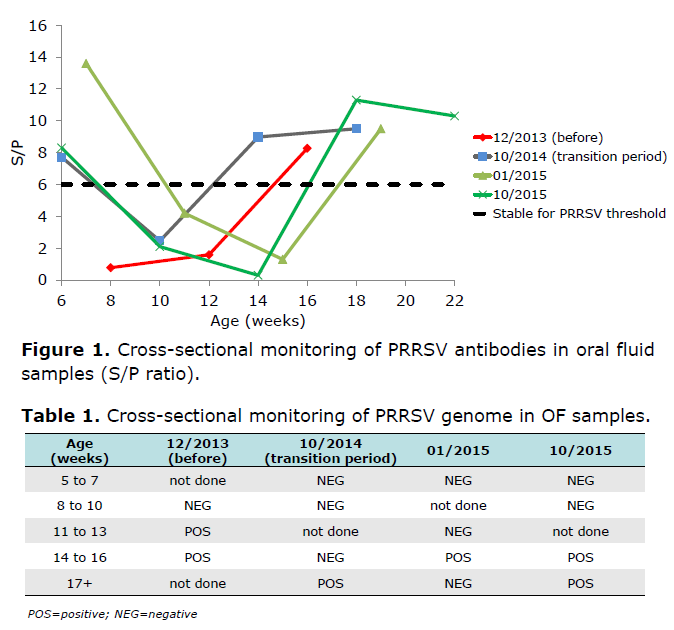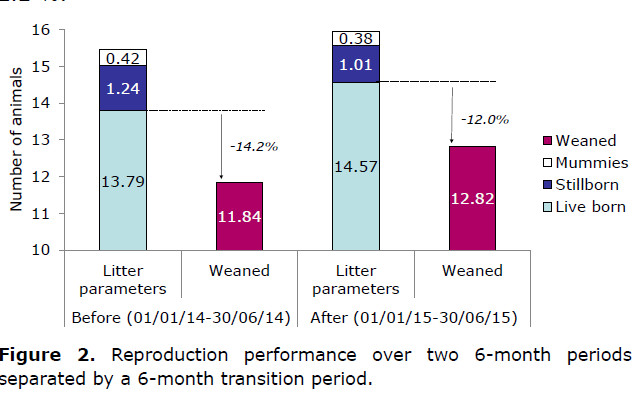



Beneficial impact of a PRRSV vaccination program combining a modified live vaccine and PROGRESSIS® on virus circulation and technical performance
PRRS is one of the most significant pig diseases in the modern swine industry. The addition of a killed vaccine (KV) vaccination at D90 of gestation in farm where sows are regularly vaccinated with a modified live vaccine (MLV) have been shown to contribute to the stabilization of the sows, leading to a better control of PRRS virus circulation in the pig flows, writes Luk Willems, DVM, Clinique Vétérinaire de L’Elorn, France.This case report describes a long-period monitoring of PRRSV circulation using oral fluid (OF) sampling and of the technical performance, to follow up potential changes associated with an additional PROGRESSIS vaccination of sows at D90 of gestation.
Materials and Method
On a French 400-sow PRRSV-positive farrow-to-finish farm operating in 5 farrowing batches of 80 sows each, the routine PRRS vaccination program consisted of the use of a MLV in sows 6 days after each farrowing. Piglets were not vaccinated against PRRS.
However, respiratory symptoms used to repeatedly occur and antibacterial treatments targeting PRDC had frequently to be applied both during the nursery and the fattening period. PRRSV infection was regularly confirmed in the nursery from 8 weeks onwards, by positive PCR results and seroconversion by ELISA (IDEXX) on sera or oral fluids (OF).
- From June 2014, a booster injection at 90 days of gestation with PROGRESSIS was introduced as a routine practice
- No other significant management factors were changed during the data collection.
Cross-sectional collections for OF samples were performed in the pig flow 4, 7 and 16 months later and analyzed for PRRS antibodies by ELISA (IDEXX) and virus RNA presence by PCR.
Technical farm data was extracted from the routine records and compared before and after the change in the vaccination protocol over two 6-month periods separated by a 6-month transition period.
Results
Following the implementation of the PROGRESSIS vaccination at 90 days of gestation, a clear increase of maternal antibodies level after birth and a steady decreased up to early fattening were observed. Virus circulation appeared to be delayed to the fattening period, from 14 weeks of life.
The average number of pigs born alive increased from 13.79 to 14.57 after the implementation of the KV vaccination. Piglet mortality in the farrowing unit was reduced from 14.2% to 12.0% on average. This resulted in an increased number of weaned piglets per litter from 11.84 to 12.82.
Standardized ADWG from 8 to 30 kg increased from 477 to 491 grams/day and the post weaning mortality slightly decreased from 2.6 to 2.2 %.
Conclusion
In this farm, the additional PROGRESSIS vaccination appeared to have a clear and long lasting positive effect on sow and pig performance confirmed by the changes in PRRSV infection dynamics.









